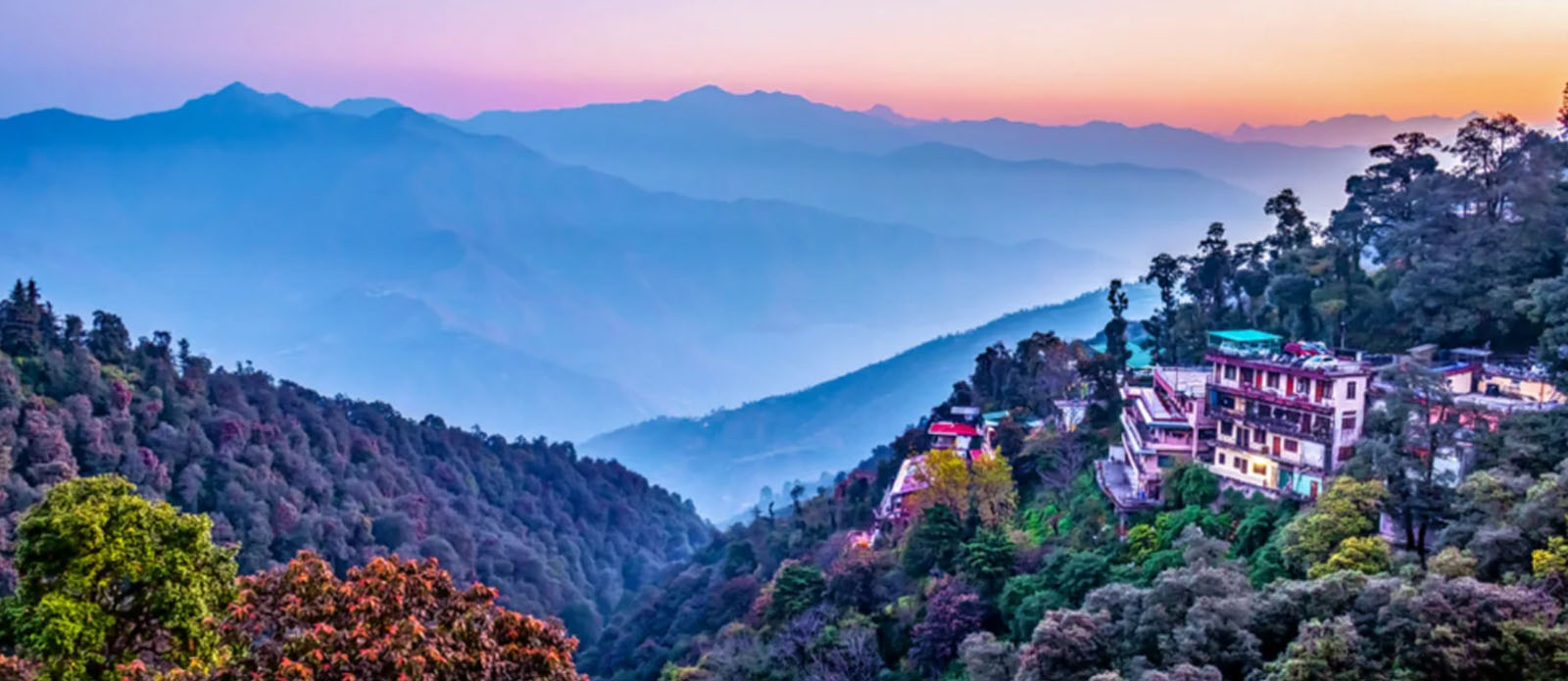Mussoorie
Mussoorie is one of Uttarakhand's most prominent hill stations, located 290 kilometres from Delhi in the Dehradun district. Mussoorie, also known as Queen of the Hills, is located at an elevation of 7000 feet above sea level and is surrounded by the Shivalik range of Himalayas and the Doon Valley. Mussoorie was previously the British summer capital, with a mild and pleasant atmosphere all year.
The city's archaic architecture can be observed in the hotels and churches, and the city's British remains may be seen in the archaic architecture of the hotels and churches. The Mall (also known as the Mall Road) is a somewhat hilly avenue with cafes and various stores running its whole stretch and is one of Mussoorie's most prominent tourist attractions. The Mall has a strong colonial feel to it, from the little residences scattered across the area to the design of even the light poles.
The Ropeway to Gun Hill is another prominent Mussoorie attraction. Gun Hill is Mussoorie's second highest point, and visitors may take a cable car ropeway journey up for a breathtaking view of the entire city as well as the surrounding Himalayan mountains.
Landour, a nearby little hill station, is part of the broader Mussoorie, which also includes Mussoorie, Barlowganj, and Jharipani. Mussoorie provides all you need for a fantastic trip, including a plethora of waterfalls, the nearby village of Dhanaulti, and the ruins of colonial architecture.
Mall Road
Mussoorie is a location that is best experienced on foot. It has broad, attractive roadways that provide a spectacular view of the valley on one side, stores on the other, and fountains and trees in between with wooden chairs. Walk through all of the stores, which sell one-of-a-kind wooden handicrafts, accessories, woollens, and more. There are also little vendors selling excellent corns, momos, sweet corn, Maggie, coffee, eggs, and other items at regular intervals. Walking along the Mussoorie Mall Road is a lovely experience because the temperature is good throughout the day.
Mussoorie's History
The term 'Mussoorie' comes from the word 'Mansoor,' which is the name of a shrub that grows abundantly in the area. In 1803, under the influence of Umer Singh Thapa, the Gurkhas fortified the area and included the Mussoorie border into their domain. The East India Company, which dominated the provinces at the time, provoked conflict in 1814.
They conquered Saharanpur district and included it into their kingdom till 1819. At the same period, British soldiers found Dehradun as a relaxing vacation location. The location was kept secret until word got out and British officers found out about it. Mussoorie became well-known as a summer holiday spot in 1827.
Mussoorie's Unique Tourist Attractions
Adventure Activities: Mussoorie is starting to make a name for itself when it comes to adventure activities. The skywalk, zip swings and zip lines, climbing, skiing, and paragliding are among the adrenaline-pumping sports available at the Mussoorie Adventure Park. If camping and hiking are more your style, the park can accommodate you as well. River rafting is another popular tourist activity in Mussoorie, where you may navigate the Dhauliganga and Alaknanda rivers.
Tourists may partake in winemaking in Mussoorie. Mussoorie boasts a number of workshops where tourists may learn how to make wine from scratch, a process known as vinification. The best thing is that each lesson concludes with an unique wine tasting.
Mussoorie is commonly referred to be a shopper's paradise, and with good cause. Kulri Bazaar, Landour Bazaar, and the Library are the primary shopping centres of Mussoorie, with stores selling anything from oddities to antiques to jewellery to plush and trendy sweaters and shawls.
Mussoorie Restaurants And Local Cuisine
Mussoorie, as a renowned tourist location, offers a diverse range of cuisines. There are many more fascinating features to the cuisine here, aside from local cuisines. In the town, one may discover Chinese, Tibetan, Indian, Thai, Moroccan, Italian, Goan, and worldwide cuisines. Enjoy the pastries and muffins, as well as the numerous cafés and a few hookah bars.
The Tibetan cuisine is believed to be the most delectable and receives a lot of attention, so don't miss out on the Momos here. Bhaang Ki Khatai, Kappa (green curry), Sisunak Saag (a meal cooked with green leafy vegetables and various local seasonings), Aloo ke Gutke (a Kumauni potato dish), Rus (a preparation of several dals), and much more can be found in Uttarakhand's native cuisine.
Is there a good time to visit Mussoorie?
The summer season, from April to mid-July, is the greatest time to visit Mussoorie since the weather is perfect for sightseeing. Mussoorie and Dehradun are also at their busiest at this time. Another ideal time to visit Mussoorie is between September and mid-November, when the Himalayas are shrouded in mist. December through February is the greatest season to visit Mussoorie if you want to see snow. From 15 July to 15 September, avoid visiting Mussoorie during the monsoon season.
Places to visit in Mussoorie
- Landour
- Mussoorie Mall Road
- Kempty falls
- Gun Hill
- Lal Tibba
- Lake Mist
- Cloud's End
- Camel's Back road
- Jharipani Falls
- Shedup Choepelling Temple
- Bhatta Falls
- Nag Tibba Treks
- Benog Wildlife Sanctury
- George Everest's House
- Dhanaulti
- Mussoorie Lake
- Company Garden
- Jwala Devi Temple Mussoorie
- Char Dukan
- Soham Heritage & Art Centre
- Jabarkhet Nature Reserve
- Paragliding & Trekking
- Happy Valley
- Mossy Falls
- Mussoorie Christ Church
- Library Bazar
- Mussoorie Heritage Centre
- K Dev Bhoomi Wax Meuseum
- White water rafting
- Rock climbing & Rappelling
- Lambi Dehar Mines
- Mussoorie Adventure Park


Comments
Post a Comment